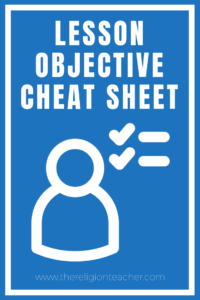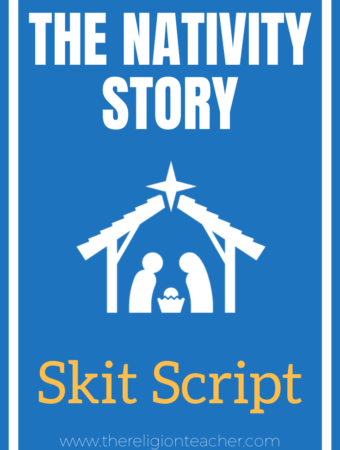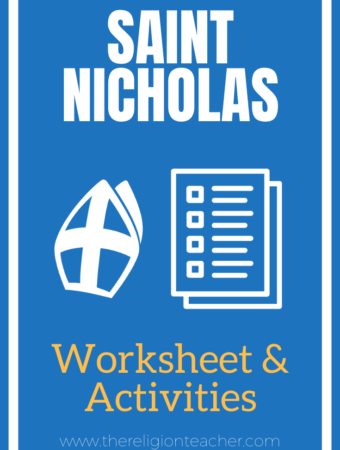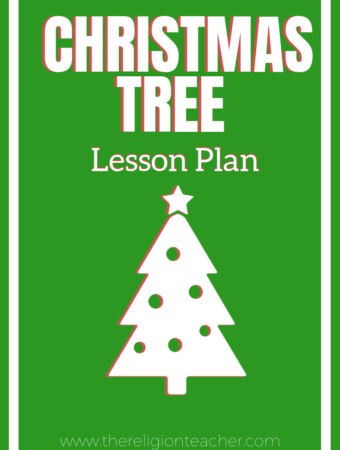 In step 2 of The Religion Teacher’s Guide to Lesson Planning, I explain how to establish lesson objectives for your students achieve by the end of your lessons. This follows step 1, which is simply creating a list of all the most important topics that you might teach in the lesson you are preparing. Check out this lesson planning checklist for a quick summary of the steps in the lesson planning guide.
In step 2 of The Religion Teacher’s Guide to Lesson Planning, I explain how to establish lesson objectives for your students achieve by the end of your lessons. This follows step 1, which is simply creating a list of all the most important topics that you might teach in the lesson you are preparing. Check out this lesson planning checklist for a quick summary of the steps in the lesson planning guide.
Two Types of Lesson Objectives: Head & Heart
1. Lesson Objective Stem
For religious educators, I recommend two types of lesson objectives.
Head: SWBAT
The first type of objective is something every teacher should use. It establishes what you want your students to be able to do with what they learn in your lesson.
These lesson objectives begin with the sentence stem “Students will be able to . . .”
Heart: SWF
As religious educators, however, we are called to inspire not only the head, but the heart. Therefore, I recommend setting a second type of lesson objective directly related to how you want your students to feel at the end of the lesson.
The sentence stem for these lesson objectives begins “Students will feel . . .”
2. Lesson Objective Verb
Each lesson objective stem is followed by a verb.
For the learning objectives (SWBAT) these verbs can be categorized into three levels of learning: retrieval, comprehension, and critical thinking.
I also categorized the verbs for the students will feel (SWF) objectives into these groups: happy, curious, blessed, inspired, and love.
You can find a list of verb examples below.
3. Lesson Objective Topic
Add the most important topic(s) from step 1 to your objectives and then you are ready to start planning the activities for your lesson.
Lesson Objective Cheat Sheet
Instead of opening up The Religion Teacher’s Guide to Lesson Planning to use as a reference for planning your lessons, I thought it would be helpful to gather up this cheat sheet for you. Feel free to visit this page or download this one-page reference sheet to use during your planning sessions:
Download the Lesson Objective Cheat Sheet >
Students will be able to (SWBAT)
Level 1: Retrieval
- Recognize/Identify from a list . . .
- State/Recall the definition of/Define . . .
- Name/List the three . . . of . . .
- Label . . .
- Describe who, what, where, when . . .
Level 2: Comprehension
- Summarize . . .
- Paraphrase . . .
- Describe the key parts of . . .
- Describe the ways in which . . .
- Explain why/the meaning of . . .
- Explain how . . .
- Depict/Illustrate/Draw . . .
Level 3: Critical Thinking
- Compare and contrast . . .
- Differentiate . . .
- Categorize/Classify/Organize/Sort . . .
- Create an analogy/metaphor for . . .
- Critique/Revise/Analyze . . . errors/problems/misunderstandings
- Create a generalization
- Make a prediction
- Create a rule/principle/criterion for . . .
- Defend/Develop/Provide evidence for/Support an argument for . . .
- Form a conclusion
- Select the best way to . . .
- Rate . . . according to . . . criterion
- Develop a strategy to . . .
- Test the idea that . . .
Students Will Feel (SWF)
- Happy: joyful, fortunate, delighted, appreciation, grateful, thankful
- Curious: interested, concerned, intrigued, fascinated, absorbed, engrossed, surprised, astonished, amazed
- Blessed: calm, peaceful, comfortable, pleased, content, relaxed, patient, free
- Inspired: determined, motivated, resolute, passionate, animated, energized, excited, stirred
- Love: affection, compassion, empathy, mercy, devotion, admiration, sympathy, touched, comforted
Lesson Objective Videos
These videos about setting lesson objectives may be helpful as well:



Thank you. I find this very useful.